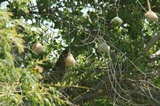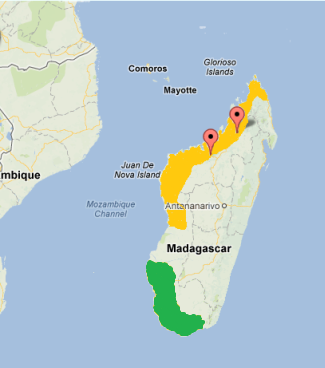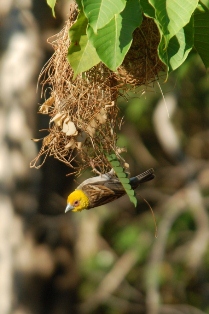Weaver news
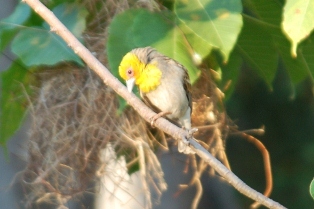
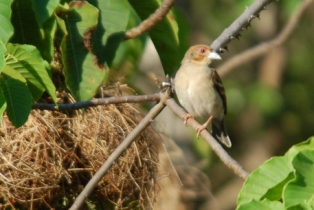
The Sakalava Weaver Ploceus sakalava is a colonial weaver found in the drier western parts of Madagascar. The adult male in breeding plumage (photo above left has a yellow head to upper breast, clearly separated from a pale belly and nape. The wing coverts have buffy-white tips forming a wingbar. The iris is brown with bare reddish skin around the eye. The non-breeding male has the head grey, and the skin around the eye is pale pink. The female (photo above right is similar to the non-breeding male but paler. Young birds are green above, yellow below, and with a golden brown wash on the chin and throat. There is one other Ploceus species in Madagascar, the Nelicourvi Weaver.
This species is one of 3 weaver species to have a bare skin patch around the eye (the others are White-headed Buffalo-weaver and the Baya Weaver). Two subspecies of the Sakalava Weaver are recognised (see map right, based on Handbook of the Birds of the World, Vol. 15, and showing the current PHOWN records:
The Sakalava Weaver is found in open country in drier lowlands, often in areas cleared for human settlement; also found in spiny-bush areas, and dry deciduous forest. The Sakalava Weaver is mainly granivorous, including some rice. It also regularly feeds on insects and spiders, especially when feeding young. It also feeds on flowers. The Sakalava Weaver is apparently mainly monogamous, with some males perhaps polygynous. This species is colonial, with 10-120 nests at a site, and up to 40 nests in one tree.
The nest (photo left, additional photo from colony at phown 76) is built by both sexes. The nest is retort-shaped, with an entrance tunnel 17-40 cm long. It is placed 2-25 m above the ground and usually in a palm, boabab or exotic Gyrocarpus americanus. The nest is sometimes attached below or near the nests of crows or raptors, eg. Madagascar Buzzard Buteo brachypterus (see phown 1489). Nests may also be suspended from the thatched roof of a village house. Males sleep in non-breeding nests during the breeding season. Clutch size is 2-4 eggs, incubation is by the female, and chicks are fed by both parents. Nests are preyed on by Madagascar Harrier-hawk Polyboroides radiatus, and eggs have been taken by the Common Brown Lemur Eulemur fulvus. There are 2 PHOWN records with colony sizes of 38 and 75 (see PHOWN summary). Many more PHOWN records are needed for this common species. Old nests may be used for breeding by the Madagascar Bibfinch Lepidopygia nana, so look at inactive colonies too. Submit any weaver nest records to PHOWN (PHOtos of Weaver Nests) via the Virtual Museum upload site. PHOWN summary Previous Wedn: Strange Weaver Full weaver species list |








